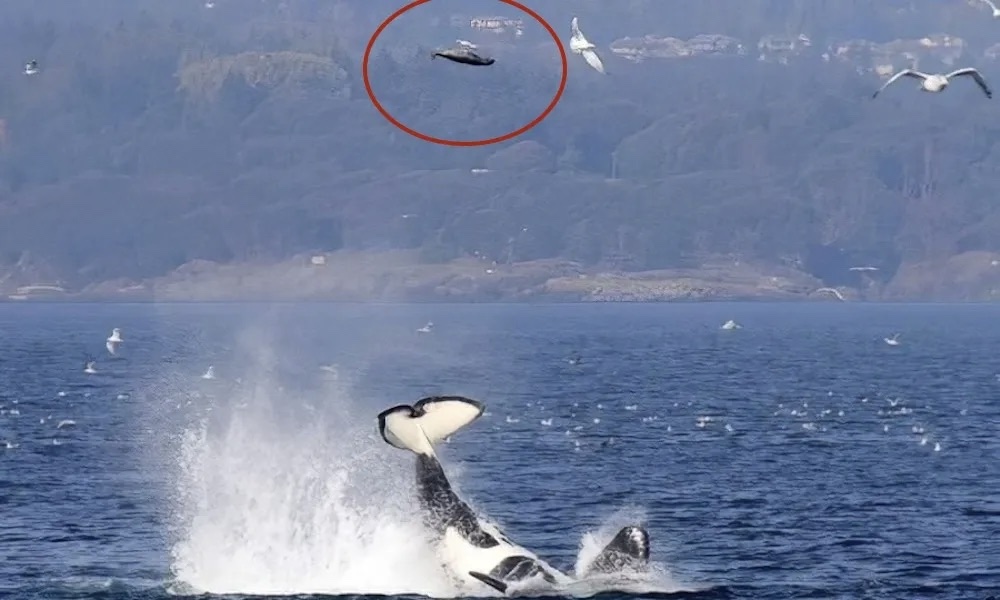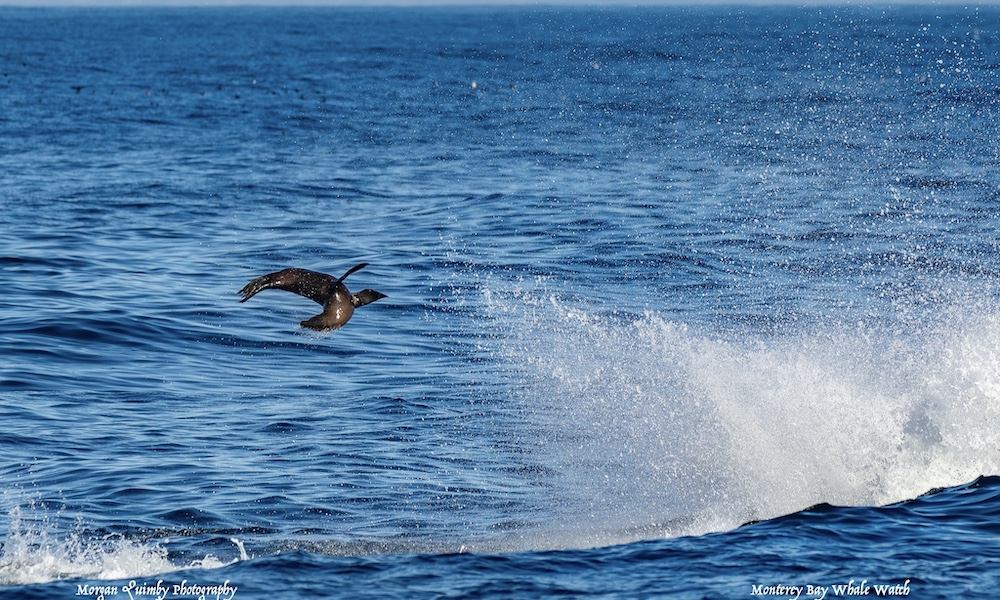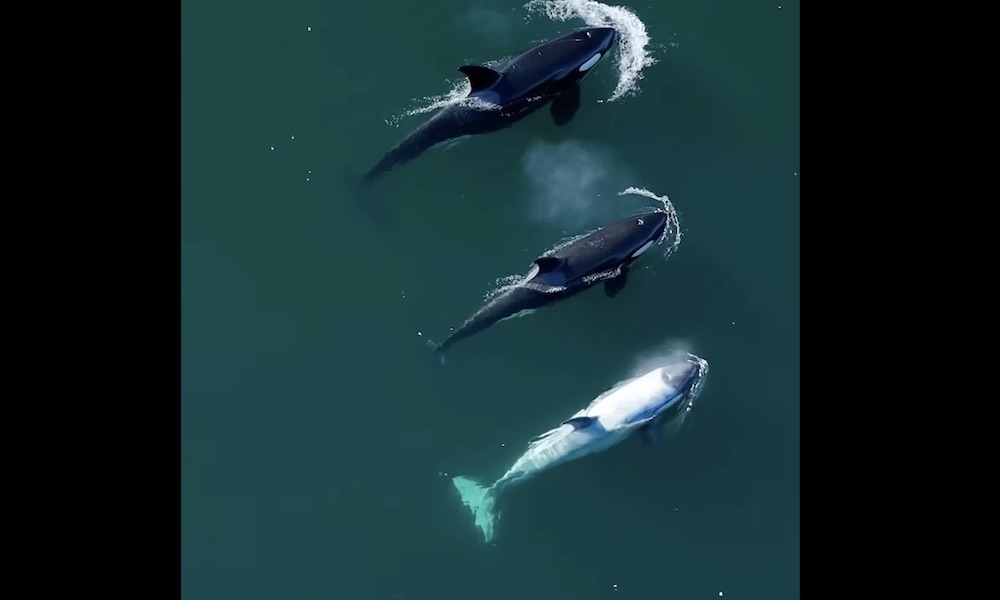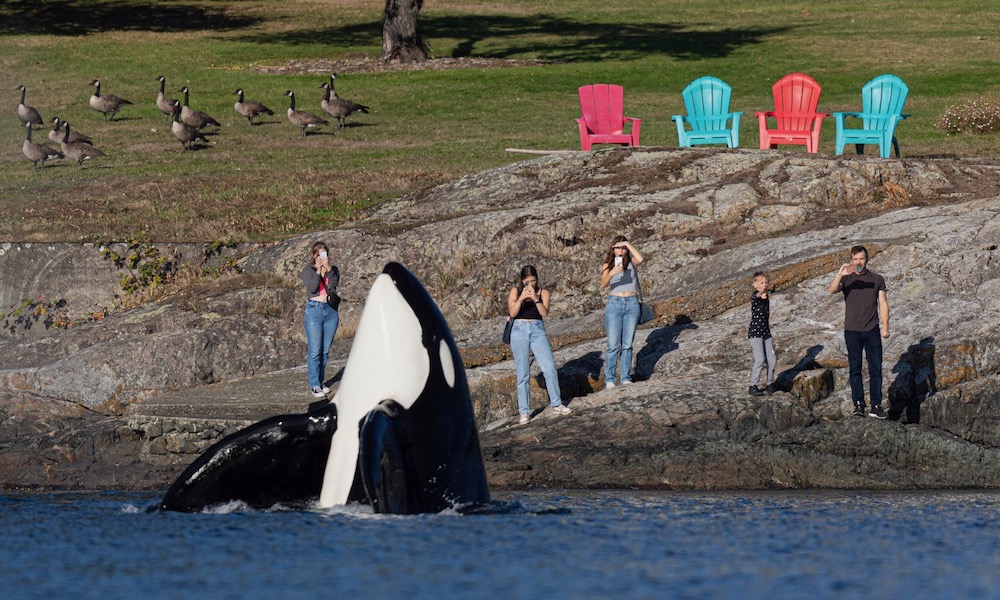On Sunday we shared images of orcas hunting (and “punting“) a sea lion off California. The photos were reminiscent of an extraordinary scene that played out eight years ago, involving an orca that punted a harbor seal 70-80 feet into the air. That story, recalled on this site last month with images and video, is posted below:
Transient orcas off the U.S. West Coast prey on marine mammals and sometimes toss the smaller animals to stun or kill them.
The accompanying images, captured by researcher Alisa Schulman-Janiger, show a male orca using his flukes to fling a harbor seal an astonishing 70 feet high.
“It’s still the most astounding thing I’ve seen,” Schulman-Janiger, co-founder of the California Killer Whale Project, told FTW Outdoors. “A momentous moment in my life.”
The harbor seal hunt, off Port Angeles in Washington State, occurred eight years ago and Schulman-Janiger shared her images Tuesday as a Facebook memory.
The event was also captured on video and that footage is posted below. (The video description places the height of the seal at 80 feet.)
The orca, or killer whale, belongs to a family cataloged as the TO69s. The standout punter is TO69C, who was about 20 years old at the time. That’s considered a young adult.
Schulman-Janiger described the event on Facebook:
“After three failed attempts, adult male T069C tossed a harbor seal more than 70 feet up into the air – sending it flying wide-eyed above the circling gulls!
“I took five photos after my highest capture, with no seal in sight; lowered my camera, looked for the seal – and saw it splash down next to the submerged orca several seconds later!
“His mom T069 and two siblings were hunting nearby; all enjoyed harbor seal for lunch.”
After the spectacular event, there was debate about the height of the seal at its apex. The 70-foot estimate is considered conservative.











